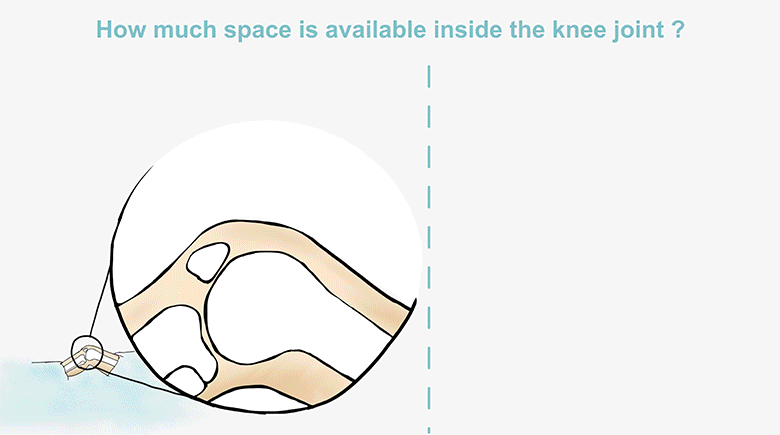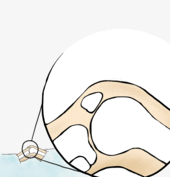
The development of novel robotic surgical instruments such as a laser-cutting tool for minimally invasive unicompartmental knee arthroplasty (UKA) is challenging when quantitative requirements are missing. Experiments on cadavers can provide valuable information to derive the needed requirements for workspace, instrument size, and surgical workflow. Therefore, we developed and applied a method to quantify the volume inside the knee joint available to manipulate robotic surgical instruments during minimally invasive procedures. We injected contrast solution into nine cadaveric knees and performed computed tomography scans. The bony structures and the injected contrast solution’s volume were segmented to investigate the size and distribution of the injected contrast solution’s volume inside the knee joints, representing the available manipulation volume for minimally invasive surgical instruments. Quantitative information was determined about the total size of the manipulation volume and its thickness orthogonal to the bone surfaces of the femur and tibia. Furthermore, we analyzed the manipulation volume thickness distribution around the cutting lines required for bone resection to place a standard UKA implant. Based on the manipulation volume thickness distribution, we could suggest a possible workflow, which provides a large manipulation volume for minimally invasive UKA using a laser-cutting tool. We deducted that an instrument with a thickness of 5-8 mm should be feasible for the proposed workflow. This work presents quantitative information on the three-dimensional distribution of the maximally available manipulation volume inside the knee joint and a method to derive such information. Such quantitative information lays the basis for developing surgical instruments that introduce substantial changes in the surgical workflow.

